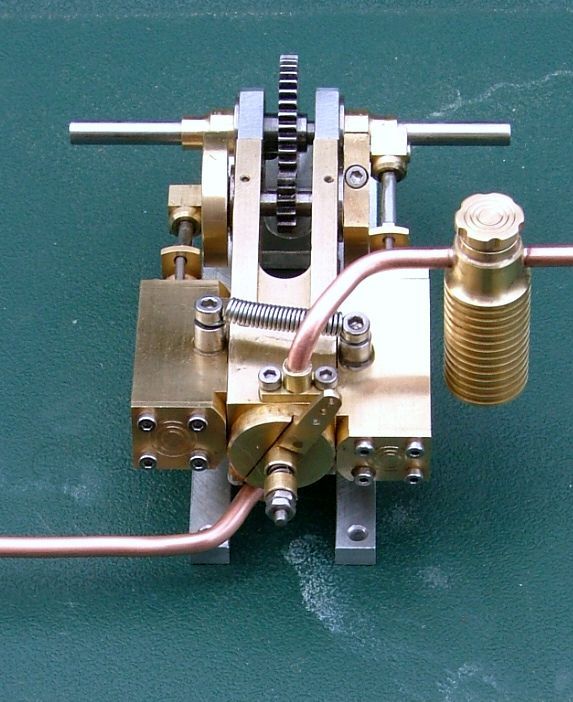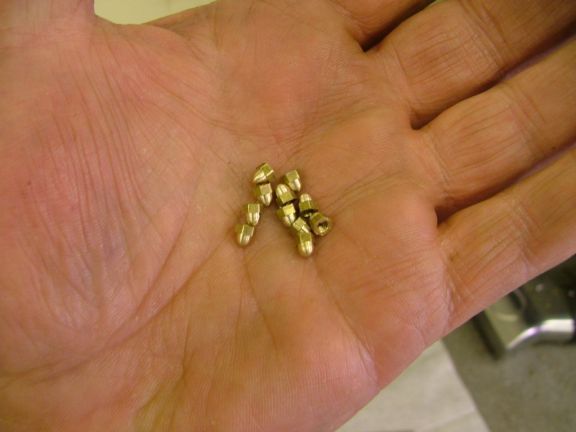- Joined
- Jun 28, 2011
- Messages
- 238
- Reaction score
- 480
The connecting rods are supposed to be three pieces as drawn on the plans. That also requires bolts smaller than I have on hand so I opted to change the plans. I made the rods one piece and bushed both ends with brass. Since my crank shaft can be disassembled the rod bearing does not need to split. I was going to leave the rod squared off, but clearance in the crosshead guide was a problem so I had to back up and turn down the center section of the rod. I assembled what I have so far and spun it up with the lathe and lots of oil. It's a little tight here and there but that can be worked out.
Pete
View attachment ImageUploadedByModel Engines1483487095.216765.jpgView attachment ImageUploadedByModel Engines1483487112.805588.jpgView attachment ImageUploadedByModel Engines1483487134.343004.jpgView attachment ImageUploadedByModel Engines1483487147.067689.jpgView attachment ImageUploadedByModel Engines1483487162.574970.jpgView attachment ImageUploadedByModel Engines1483487199.432556.jpgView attachment ImageUploadedByModel Engines1483487251.066692.jpgView attachment ImageUploadedByModel Engines1483487268.590052.jpgView attachment ImageUploadedByModel Engines1483487283.049331.jpgView attachment ImageUploadedByModel Engines1483487293.383438.jpgView attachment ImageUploadedByModel Engines1483487304.571163.jpgView attachment ImageUploadedByModel Engines1483487315.355787.jpgView attachment ImageUploadedByModel Engines1483487349.461765.jpg
Pete
View attachment ImageUploadedByModel Engines1483487095.216765.jpgView attachment ImageUploadedByModel Engines1483487112.805588.jpgView attachment ImageUploadedByModel Engines1483487134.343004.jpgView attachment ImageUploadedByModel Engines1483487147.067689.jpgView attachment ImageUploadedByModel Engines1483487162.574970.jpgView attachment ImageUploadedByModel Engines1483487199.432556.jpgView attachment ImageUploadedByModel Engines1483487251.066692.jpgView attachment ImageUploadedByModel Engines1483487268.590052.jpgView attachment ImageUploadedByModel Engines1483487283.049331.jpgView attachment ImageUploadedByModel Engines1483487293.383438.jpgView attachment ImageUploadedByModel Engines1483487304.571163.jpgView attachment ImageUploadedByModel Engines1483487315.355787.jpgView attachment ImageUploadedByModel Engines1483487349.461765.jpg






